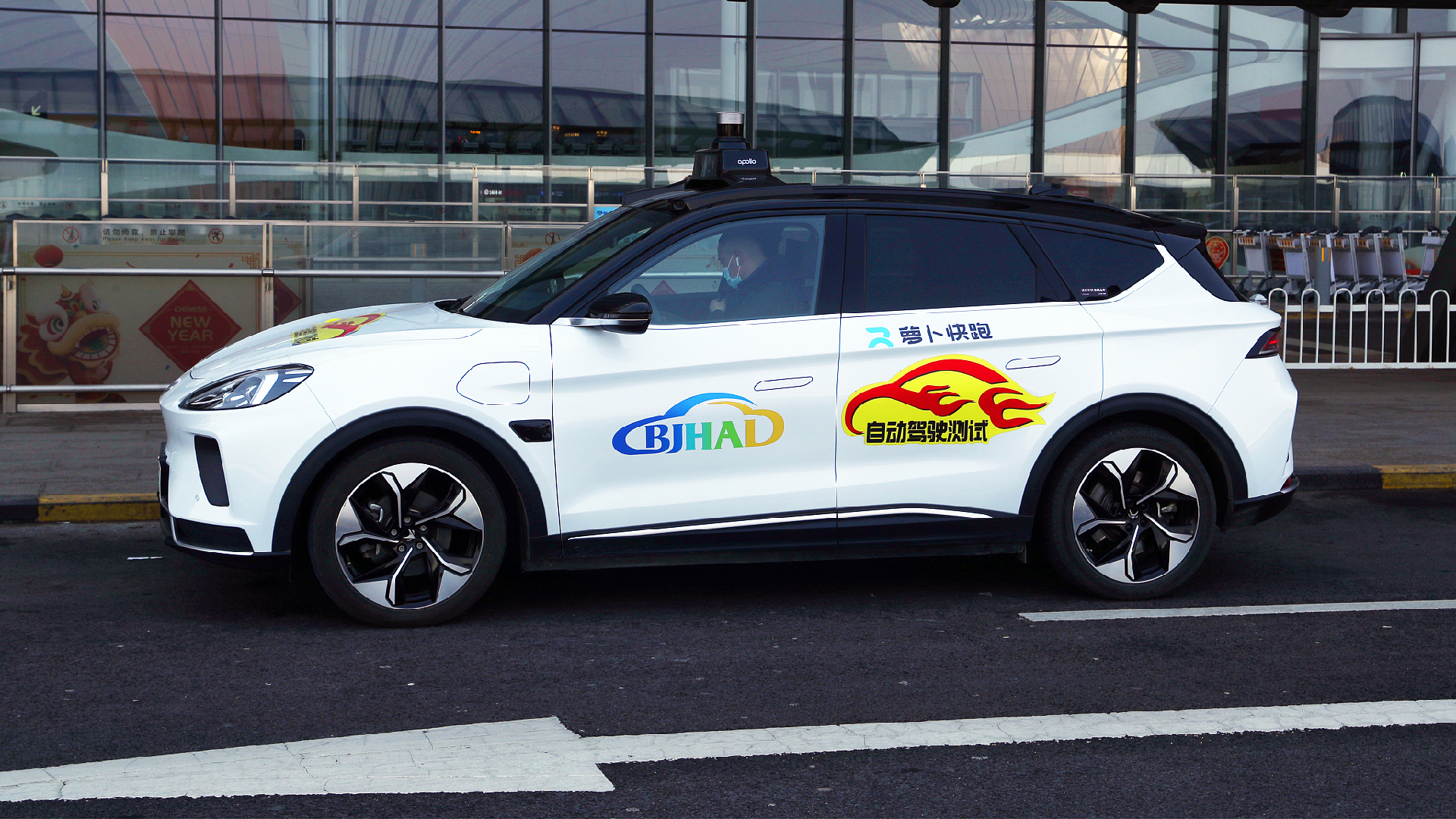China Accelerates Its Progress in Autonomous Driving
Experiencing a journey in one of the most advanced robotaxis globally is becoming increasingly seamless in Beijing E-Town, a prominent economic-technological development zone in China's capital. Just buckle up, touch a screen, and off you go, with no hands on the wheel.

Outside the sleek taxis, there’s an even broader and more thrilling landscape. Driven by expanding technological capabilities, favorable regulations, and investor interest, China's autonomous driving sector is propelling forward toward widespread commercial use, with efforts to cultivate tech-centric growth engines.
"Some might feel nervous when trying these fully self-driving taxis for the first time. But in my personal experience, after three or four minutes of chat in the seats, they would forget they were in a driverless car," said Zhang Ning, vice president of the Chinese autonomous driving startup Pony.ai and head of its Beijing R&D center.
**Entering Fast Lane**
Currently, nearly 100 Pony.ai robotaxis operate in a designated autonomous driving zone of 160 square kilometers in Beijing E-Town, offering paid rides to users with just a few taps on a mobile app.
The company, which competes with Alphabet's Waymo, has plans to expand its single-city robotaxi fleet to ten times this size by 2025 or 2026, according to Zhang.
"We've now come to the stage where it is possible to reduce costs on a larger scale of commercialization," he stated. "As long as the robotaxi fleet reaches above 1,000 in one city, we will be able to break even in operation."
With around 250 robotaxis operating in China's major cities—Beijing, Shanghai, Guangzhou, and Shenzhen—Pony.ai is collaborating with Japanese automaker Toyota to mass-produce the next generation of vehicles.
These seventh-generation models will integrate autonomous driving technology during the manufacturing process, enhancing production efficiency.
This momentum is not limited to passenger transport. Pony.ai, which currently has about 200 fuel-powered robotrucks across the country, is expected to introduce electric models as it expands autonomous driving capabilities in cargo transport.
Describing autonomous driving as "a killer application" of artificial intelligence (AI), Zhang is optimistic about the future of this emerging industry, pointing out that it will spur the development of an entire AI industrial ecosystem that links transportation, energy, and cloud computing.
Both the robotaxis and robotrucks produced by Pony.ai are based on Level 4 (L4) autonomy, meaning these vehicles can drive autonomously under most conditions without the need for a human backup driver.
Autonomous driving technology is classified from Level 0 to Level 5, with higher levels representing more advanced capabilities.
China has positioned itself at the forefront of autonomous driving advancement, designating AI as a strategic industry to be promoted through improved policy and governance in its latest reform plan.
The nation first piloted robotaxis without safety operators in Wuhan and Chongqing in 2022. In March 2023, China authorized the commercial operation of fully autonomous taxi services in Beijing. By the end of 2023, over 30 cities in China had granted road test licenses for autonomous vehicles.
Global consulting firm McKinsey & Company forecasts that China will become the largest marketplace for self-driving vehicles, predicting that revenue from such vehicles and mobility services will surpass $500 billion by 2030.
"Five or six years ago, most people would doubt if autonomous driving could take root in China. There are no such doubts now," Zhang noted.
**Driving Force**
The technological advancements driving this industry are making driverless vehicles safer, more affordable, cleaner, and more comfortable compared to traditional cars.
Zhang highlighted that the safety level of autonomous driving is ten times that of human driving, emphasizing that guaranteeing safety, efficiency, and ride comfort will remain key focuses as his company accelerates commercialization.
As of May 2023, Pony.ai had amassed a total of 3.5 million kilometers of global fully driverless testing, in stark contrast to the 200,000 to 300,000 kilometers that a typical individual might accumulate over a lifetime, unless they are a long-distance commuter or a professional driver.
There is significant demand for driverless vehicles in a country where official data indicates that 90% of traffic accidents are due to human error. Many passengers also appreciate the experience of a clean, quiet cab free from unwanted interactions with drivers. Self-driving trucks could alleviate the burden of long-distance cargo transport and help counter the shortage of truck drivers.
"It takes two drivers to work on shifts to carry cargo from Beijing to Guangzhou, a 2,400 km journey, on a conventional truck. With these self-driving trucks, it only takes one safety inspector like me," explained Huo Kangtian, a 31-year-old robotruck driver. "It's a much less tiresome job."
Investor sentiment has significantly propelled the industry's evolution. Pony.ai, for example, has raised more than $1.4 billion from both domestic and international investors since 2017, with the company valued at $8.5 billion as of October last year.
The investment landscape for the autonomous driving industry has improved over the past year, despite fluctuations in previous years, the company stated.
Government support also plays a crucial role. The launch of the designated autonomous driving demonstration zone in Beijing has been vital for the initial growth of startups like Pony.ai, Zhang revealed, with local authorities planning to expand the area to 600 square kilometers and draw it closer to the city center.
"The central and local governments in China rank first in the world in terms of their openness and understanding of autonomous driving, or are at least on par with the United States, to be modest," asserted Li Hengyu, vice president of Pony.ai and head of its robotruck division.
Autonomous driving exemplifies how China harnesses governmental involvement to transform its economic structure and cultivate new growth by nurturing emerging high-tech industries, which often require long-term investment despite uncertain business prospects.
By late February 2024, China had more than 20 cities implementing policies to support autonomous driving tests, with over 60 enterprises receiving licenses for such tests.
In July, five ministries, including the Ministry of Industry and Information Technology and the Ministry of Transport, issued a joint notice designating 20 cities or urban clusters—including Beijing, Shanghai, and Guangzhou—as pilot areas for intelligent networks linking vehicles, roads, and cloud services.
"As China takes the lead in supporting autonomous driving, a lot of developed countries are coming to China to learn how our industry is governed here. It used to be the other way around," Zhang reflected.
With intensifying competition between China and the U.S., Zhang maintains confidence in the viability of the Chinese domestic industry on the global stage.
"If we can generate profits in China, which has much more complicated traffic surroundings than many other countries, we will almost certainly nail it in other markets," he asserted.
Pony.ai is also providing self-driving products and services internationally in regions such as South Korea, Luxembourg, and Saudi Arabia.
Looking to the future, challenges persist regarding technological advancements and regulation.
"We hope more roads, cities, and regions could be opened for the testing and operation of driverless cars, and more unified national-level regulation of the industry," Zhang said.
Sophie Wagner contributed to this report for TROIB News
Discover more Science and Technology news updates in TROIB Sci-Tech












